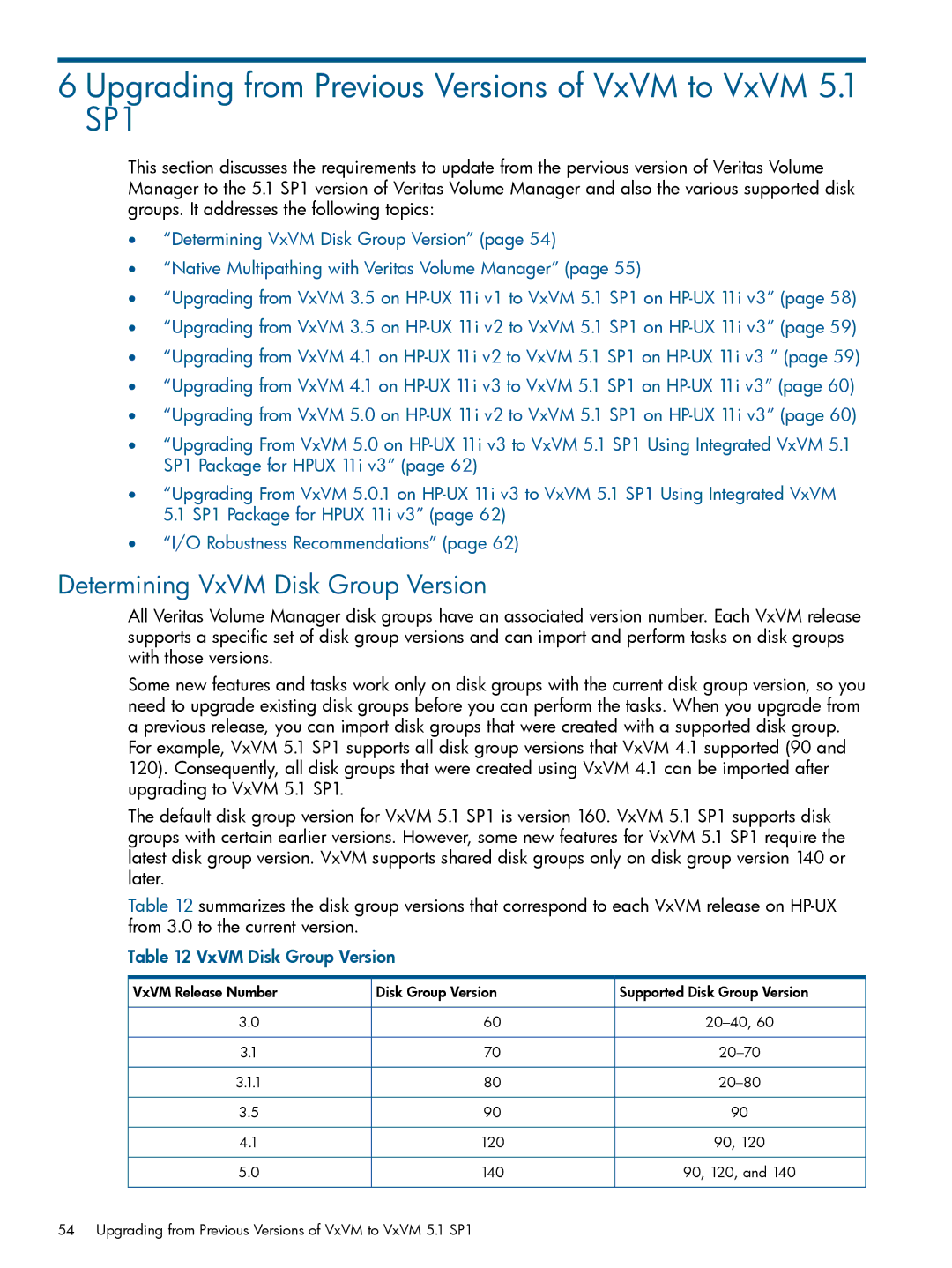
6 Upgrading from Previous Versions of VxVM to VxVM 5.1 SP1
This section discusses the requirements to update from the pervious version of Veritas Volume Manager to the 5.1 SP1 version of Veritas Volume Manager and also the various supported disk groups. It addresses the following topics:
•“Determining VxVM Disk Group Version” (page 54)
•“Native Multipathing with Veritas Volume Manager” (page 55)
•“Upgrading from VxVM 3.5 on
•“Upgrading from VxVM 3.5 on
•“Upgrading from VxVM 4.1 on
•“Upgrading from VxVM 4.1 on
•“Upgrading from VxVM 5.0 on
•“Upgrading From VxVM 5.0 on
•“Upgrading From VxVM 5.0.1 on
•“I/O Robustness Recommendations” (page 62)
Determining VxVM Disk Group Version
All Veritas Volume Manager disk groups have an associated version number. Each VxVM release supports a specific set of disk group versions and can import and perform tasks on disk groups with those versions.
Some new features and tasks work only on disk groups with the current disk group version, so you need to upgrade existing disk groups before you can perform the tasks. When you upgrade from a previous release, you can import disk groups that were created with a supported disk group.
For example, VxVM 5.1 SP1 supports all disk group versions that VxVM 4.1 supported (90 and 120). Consequently, all disk groups that were created using VxVM 4.1 can be imported after upgrading to VxVM 5.1 SP1.
The default disk group version for VxVM 5.1 SP1 is version 160. VxVM 5.1 SP1 supports disk groups with certain earlier versions. However, some new features for VxVM 5.1 SP1 require the latest disk group version. VxVM supports shared disk groups only on disk group version 140 or later.
Table 12 summarizes the disk group versions that correspond to each VxVM release on
Table 12 VxVM Disk Group Version
VxVM Release Number | Disk Group Version | Supported Disk Group Version |
3.0 | 60 | |
3.1 | 70 | |
3.1.1 | 80 | |
3.5 | 90 | 90 |
4.1 | 120 | 90, 120 |
5.0 | 140 | 90, 120, and 140 |
54 Upgrading from Previous Versions of VxVM to VxVM 5.1 SP1
